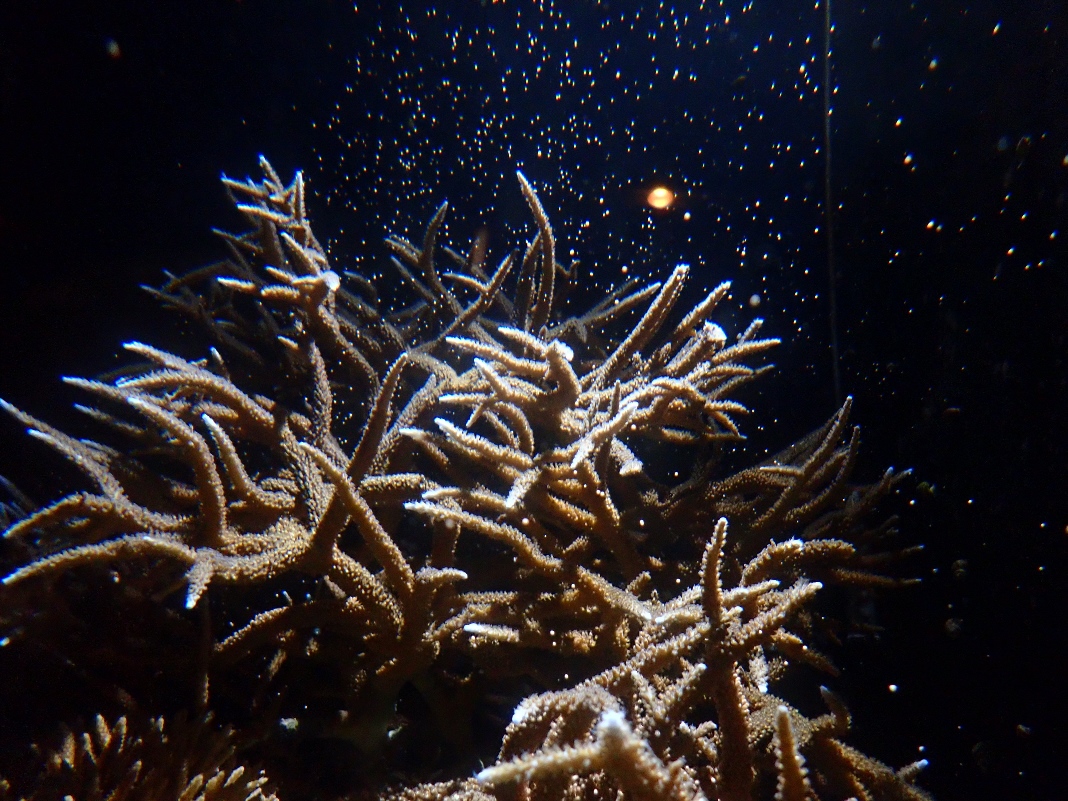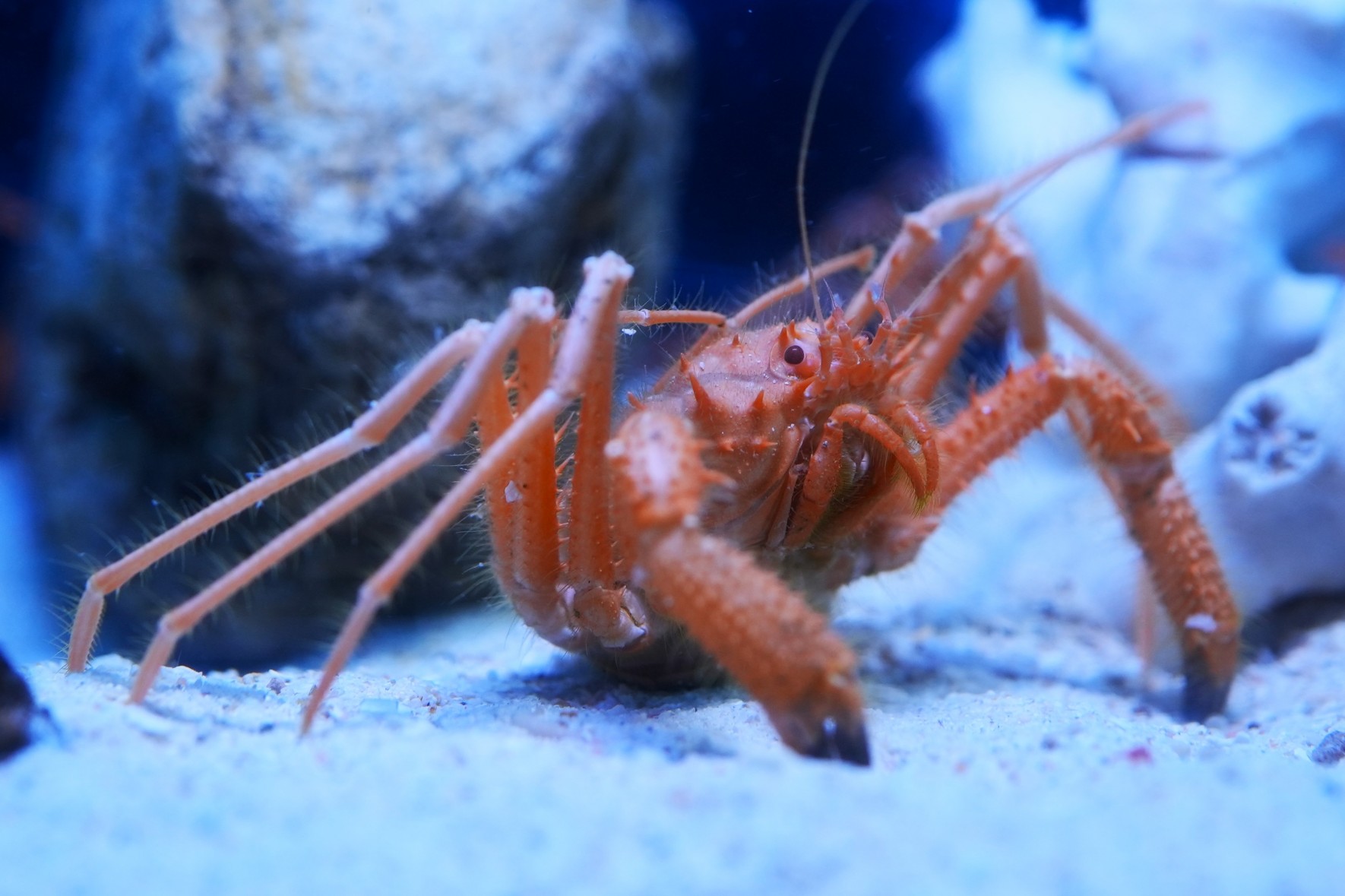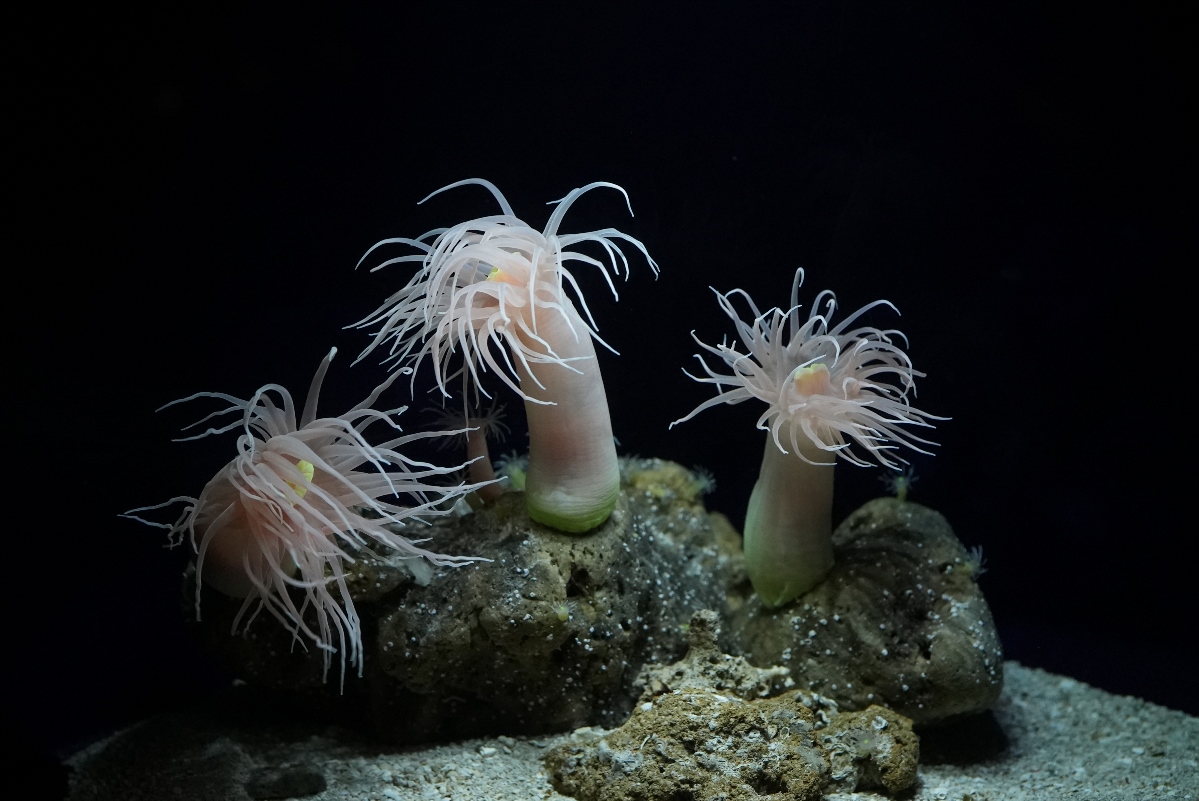Topics
2018.12.27
Going back and forth from one uterus to another! The world’s first observation of this swimming behavior in tawny nurse shark embryos.
Okinawa Churaumi Aquarium, managed by Okinawa Churashima Foundation, was able to conduct underwater ultrasound imaging of pregnant tawny nurse sharks in the Kuroshio Sea Tank. For the first time in the world, they could see the embryos of tawny nurse sharks moving back and forth between the right and left uterus.

-
≪Tawny nurse shark≫
Scientific name:Nebrius ferrugineusThe tawny nurse shark is distributed across the Indo-Pacific region. It is a benthic shark and lives in shallow waters of coral reefs. It reaches 3 meters in length. In 2006, Okinawa Churaumi Aquarium succeeded in breeding this species for the first time, and received a Breeding Award.
*The Japanese Association of Zoos and Aquariums (JAZA) presents awards to Japanese zoos and aquariums that succeed in breeding a species for the first time in Japan.
Sharks and rays have two uteri, one on the left and one on the right. Reproduction methods vary including oviparous (egg laying) and viviparous (live birth). Tawny nurse sharks give birth to live young. While in the uteri the embryonic tawny nurse sharks consume unfertilized eggs as a source of nutrition. However, as with similar species, the behavior of embryos in the uterus is poorly known.
An underwater ultrasound technique developed by the Okinawa Churaumi Aquarium and managed by the Okinawa Churashima Foundation was used to conduct repeated examinations of the pregnant tawny nurse sharks. Ultrasounds showed that embryos could swim within a uterus, and also frequently swim between left and right uterus. This behavior is thought to be allow the embryos to feed on as many of the unfertilized eggs as possible.
This was the first discovery of a shark embryo utilizing both uteri, which makes it an extremely valuable finding in reproduction research of sharks and rays.
Okinawa Churaumi Aquarium strives to develop health management techniques for captive animals, and to further reproductive research for a better understanding of species ecology and conservation.
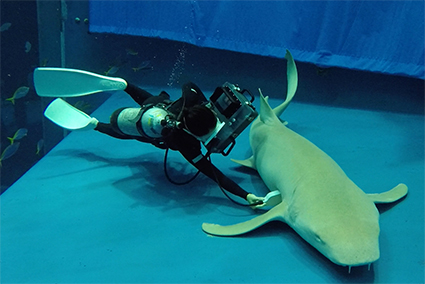
Conducting an underwater ultrasound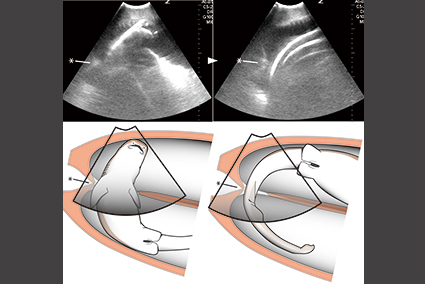
Embryo movement in the uterus
Detailed results were published in an international academic journal.
Journal publishing article
Ethology (2018): 1–5. DOI: 10.1111/eth.12828
Title
Locomotion is not a privilege after birth: Ultrasound images of viviparous shark embryos swimming from one uterus to the other
Authors
Taketeru Tomita, Kiyomi Murakumo, Keiichi Ueda, Hiroshi Ashida, Rina Furuyama
The embryo that was observed within the uterus was born on October 18th, 2017. Currently, it is exhibited in the Churaumi Plaza tank below the escalator of the exit of Okinawa Churaumi Aquarium. The ultrasound footage taken during this research can be seen in the Shark Research Lab in the Okinawa Churaumi Aquarium.
Inquiries
Okinawa Churaumi Aquarium
905-0206
424 Ishikawa, Motobu-cho, Kunigami-gun, Okinawa Prefecture
TEL:+81-980-48-3748
FAX:+81-980-48-4444


